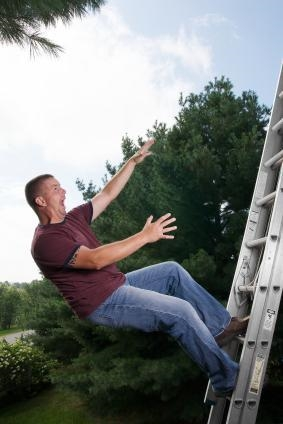Fall protection safety on contractors' job sites is improved when tool box talks are regularly scheduled. The time invested in brief job site meetings leads to:

- safer job sites,
- lower injury rates
- better crew morale
- improved productivity and job cost
- lower workmen's compensation costs
- belief that safety is important
Developing and Implementing A Tool Box Talk Safety Program
Any contractor can start a tool box talk program without much effort or cost. Your tool box talk program shows that you train your workers on a regular basis. This helps meet the OSHA training requirements. Also these tool box talks become part of your documentation and record keeping. This is a great way to start building your Safety Manual and Program for your company.
Here are some basic tips on starting your own program.
- Choose topics that cover the most dangerous hazards on your projects. For example you may choose fall protection because the majority of deaths and injuries that occur in residential construction are caused by falls. Other topics may include head safety, eye and face protection, tool safety and electrical hazards.
- Read and learn the OSHA Standards related to protecting your workers on fall hazards. For fall protection there are three standards to read: Subpart M (Duty to Have Fall Protection), Subpart L (Scaffolding), Subpart X (Stairs and Ladders).
- Develop a schedule of when you would conduct safety meetings. For example one of our coaching clients decided that he would hold a tool box talk meeting twice a month on Monday mornings when the crew turned in time cards. The topic would be specific to a standard he is required to train his workers on.
- Create a safety tool box talk binder to place the paperwork from each meeting. This becomes part of your safety training program and record keeping showing adherence to OSHA requirements. The paperwork should include an announcement of the meeting and topic(s), the topic on paper and a log in log out sheet to be signed by each participant.
- Encourage participation from your crew. For example assign a topic to a crew member and have them teach the topic of the week to their teammates.
- Keep the meeting positive and let your crew know that their safety is very important at your company. Let them know that you want them to go home every night safely.
- Encourage your workers to bring up suggestions on topics and any concerns they have about safety on the company projects.
With a little bit of effort any contractor can implement a simple tool box talk program into their company. The key is to do it consistently. The reason to do it is because you care about them and their safety while they work on your projects.
OSHA Focusing On Fall Protection
Another fringe benefit for conducting tool box talks as part of your training program is it will help you comply with OSHA Standards. Doing one on fall hazards is timely as OSHA has made fall protection a priority for enforcement.
For help developing and implementing a tool box talk safety program for your team contact Mark.



